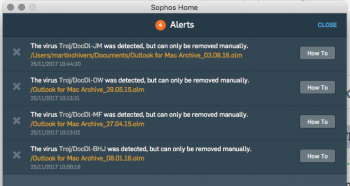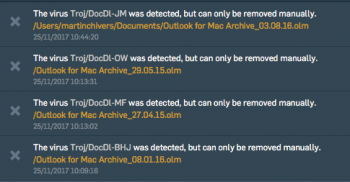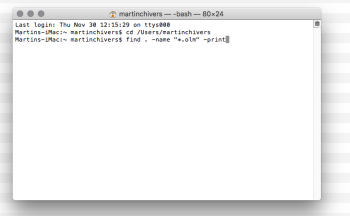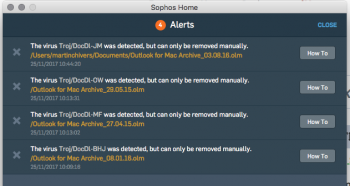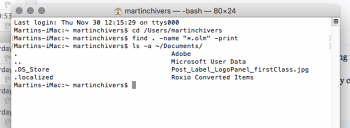using Mac OS High Sierra. Late 2012 iMac
Ive run Sophos Home and its come up with 4 viruses. These cannot be removed by Sophos itself but can only be removed manually. Ive made a note of the file names and searched (finder) for them. They are however hidden. Ive googled show hidden folders and followed the steps, but with no success at all.
file names....
/Users/martinchivers/documents/Outlook for macArchive_03.08.16.olm
and various versions of
/OutlookformacArchive_(dates) .olm
(see screenshot). I can find the normally hidden "Library" folder. Within "users"/martinchivers ive now been able to locate "martinchivers" and Documents (with is greyed out). But I am able to open the folders, but they don't contain the files I need to delete.
Can anybody tell me how to find them? Once I do, I assume I delete them, remove from trash-reboot etc? Anything else I need to do?
Ive run Sophos Home and its come up with 4 viruses. These cannot be removed by Sophos itself but can only be removed manually. Ive made a note of the file names and searched (finder) for them. They are however hidden. Ive googled show hidden folders and followed the steps, but with no success at all.
file names....
/Users/martinchivers/documents/Outlook for macArchive_03.08.16.olm
and various versions of
/OutlookformacArchive_(dates) .olm
(see screenshot). I can find the normally hidden "Library" folder. Within "users"/martinchivers ive now been able to locate "martinchivers" and Documents (with is greyed out). But I am able to open the folders, but they don't contain the files I need to delete.
Can anybody tell me how to find them? Once I do, I assume I delete them, remove from trash-reboot etc? Anything else I need to do?


